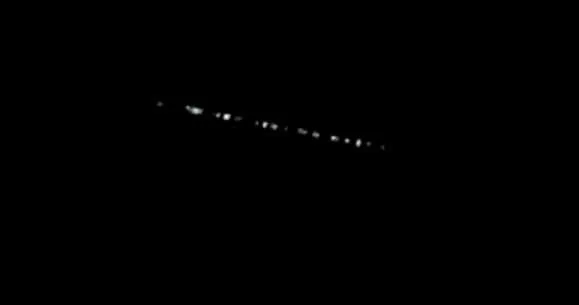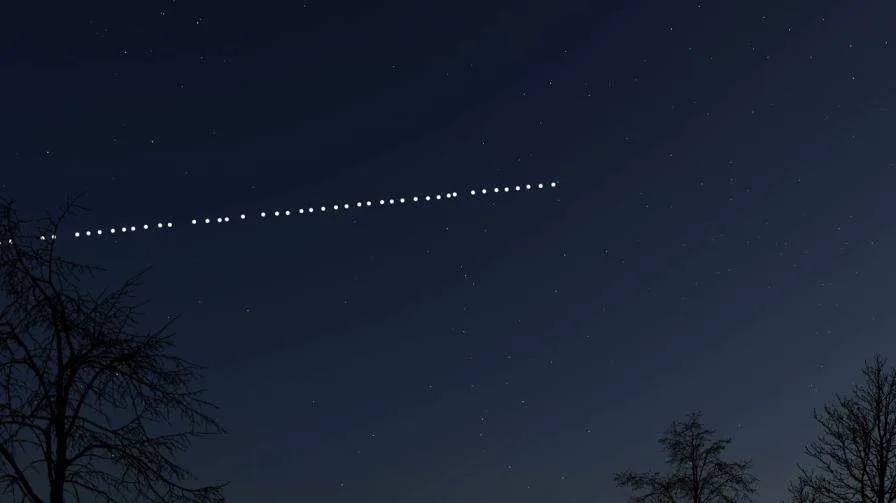Sydneysiders left stunned after sighting strange objects streaking in the night’s sky.
Several social media posts show onlookers staring in disbelief at a neat line of bright lights crossing in space this week. The man-made phenomena are becoming increasingly common sights in the sky and are recently-launched Starlink satellites courtesy of billionaire businessman, Elon Musk.
Residents in Sydney, Australia, noticed some strange objects in the night sky. The social media posts of onlookers showed the eerie objects. People were confused and asked what they were.
The machines can be seen in the sky as a train of shining white lights. The train of satellites was spotted above Sydney and the Central Coast
In a press conference organised by the Deputy Director of the Institute of Astronomy at the University of Bern in Switzerland, the European Space Agency (ESA), Thomas Schildknecht, said the trains clutter the sky.
“Do we want to see them in the Australian outback? In Antarctica? Or in the vey dark regions of Chile?

“These trains are nice and impressive, but do we really want to see them everywhere?” Dr Schildknecht said.
Hobbyist astronomers have also complained about the possibility of a new artificial night sky interfering with natural observations.
There are currently more than 1,600 Starlink satellites in orbit, but that number is expected to grow as SpaceX has filed paperwork for up to 42,000.
The sheer amount of satellites has sparked concern from some astronomers, who launched a bid to protect the night skies in April 2021.
The most recent launch came just a few days ago when a stack of satellites was launched into the sky via a SpaceX Falcon 9 rocket on Friday. (07/01/2022)
Space enthusiasts can track exactly where Starlink satellites are located and know when to see them through the findstarlink website.
Victorian Lyn MacKenzie also witnessed the internet-beaming SpaceX satellites passing over the town of Stawell in western Victoria in November last year.
Operators of satellite constellations are constantly forced to move their satellites due to encounters with other spacecraft and space debris. As a result of Starlink satellites, the number of such dangerous approaches will continue to increase, according to estimates based on available data.
Starlink satellites alone are involved in around 1,600 close encounters between two spacecraft each week, which is about 50% of all such accidents, according to Hugh Lewis, head of the Astronautics Research Group at the University of Southampton, UK. These encounters include situations where two spacecraft pass within 0.6 miles (1 kilometer) of each other.
The number of Starlink satellites launched by the company will grow as the company reaches its target numbers







